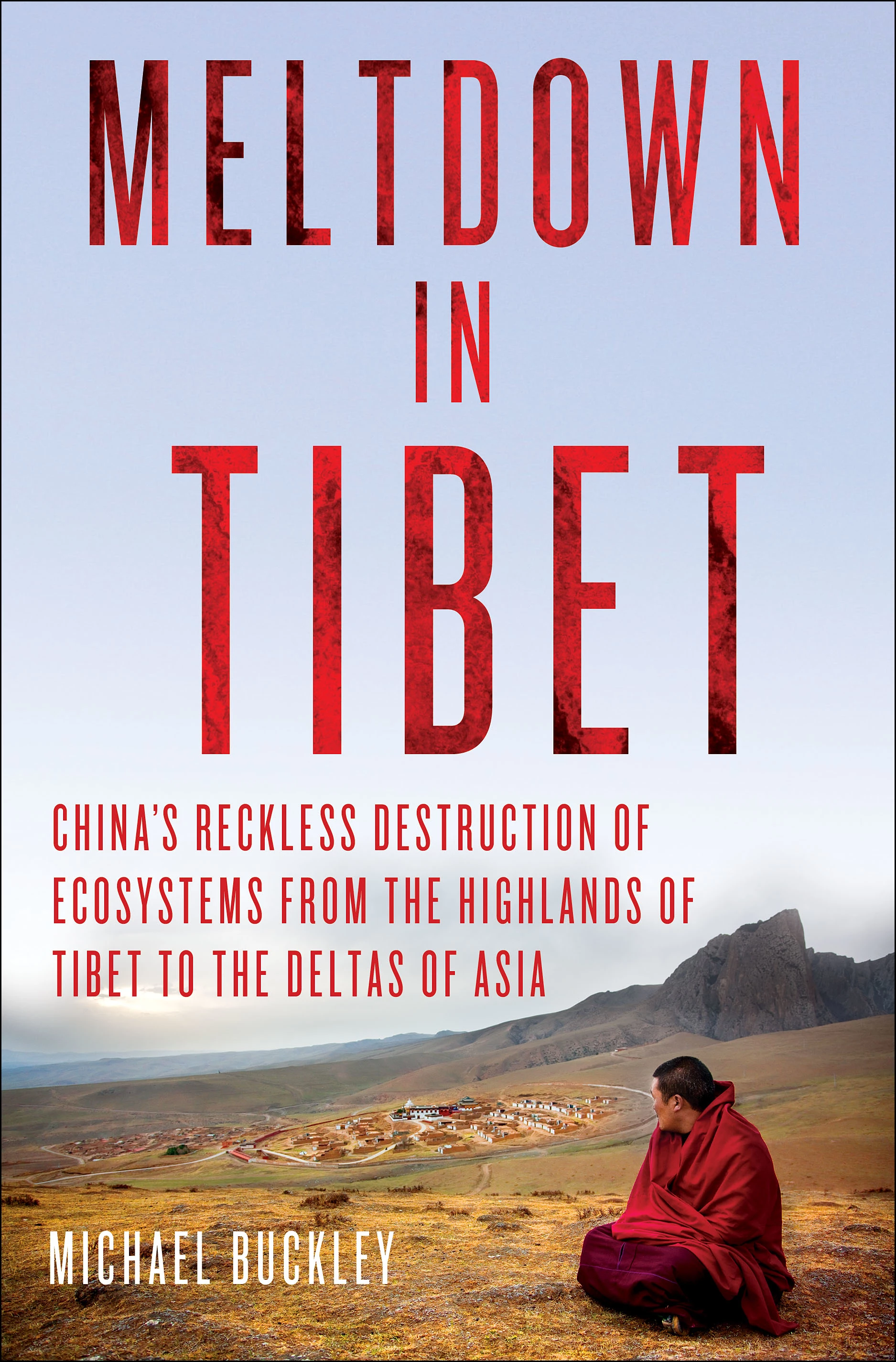has written from South Asia, Eastern Europe, and the Middle East.
By Michael Buckley
Palgrave Macmillan.
248 pp. $27
Mahatma Gandhi delivered a trenchant assessment of the British Empire in 1928. “The economic imperialism of a single tiny island kingdom is today keeping the world in chains,” he wrote. Gandhi would lead India to freedom by 1947. But writing at a time when he was still surrounded by the squalid spectacle of imperial exploitation, he imagined a future when Britain’s destitute subjects sought, upon their liberation from foreign rule, to mimic the hoggish habits of their colonial overlords. If the masses of Asia “took to similar economic exploitation” as the West, he warned, “it would strip the world bare like locusts.”

Michael Buckley renders an important service in this outspoken book by alerting us to the fact that, for millions of Tibetans, the desolate future evoked by Gandhi has been a reality for decades. Buckley, a Canadian journalist and photographer, has been traveling to Tibet for more than 30 years. Here, he documents the calamitous consequences of China’s unsparing usurpation of Tibet’s natural resources. Since its violent annexation of Tibet in 1950, China has relentlessly disfigured the hypnotically beautiful plateau. It has mined and carted away Tibet’s mineral wealth, dammed and diverted waters from its bountiful rivers, herded innumerable Tibetans into what it calls “New Socialist Villages,” suppressed the expression of Tibetan identity, and annihilated whole ways of life. “Tibet,” Buckley reminds us, “is the largest colony in the world.”
Buckley is a keen observer. Seemingly minute changes in Tibet’s environment set him off on a quest to uncover their underlying causes. Stung by a mosquito in Lhasa, Tibet’s capital, he is at first baffled: Mosquitoes aren’t supposed to be able to survive above 11,000 feet, and Lhasa sits at an altitude of 12,000 feet. Historically, Tibet has never been affected by malaria, still among the most fatal diseases in the vicinity. But as China’s aggressive colonization degrades Tibet’s habitat, this may soon change. The railway line from Beijing to Lhasa — a feat of engineering and a fount of pollution — brings trainloads of Han Chinese tourists and settlers who, occupying the top tier of China’s ethnic hierarchy and indifferent to the local customs, increasingly resemble the British in India: foreigners seeking fortunes and adventure in an exotic outpost.
Despite his emotional investment in Tibet, Buckley’s prose is not weighed down by sentimentalism. He does not romanticize or exalt the victims. “Tibetans were not environmentalists,” he notes. “They had no concept of sanitation, plumbing, or garbage disposal.” But unlike the starry-eyed Western observers of China who, enraptured by the glitz of Shanghai’s skyscrapers, have rushed to pronounce this the Chinese century, Buckley is mindful of the unfathomable human suffering on the periphery that underwrites the glamour of the governing elite who inhabit China’s metropolises. To them, Tibet is a source of prized minerals, hydropower and water — officially classified as “Water Tower Number One.” Having survived waves of genocide, Tibetans must now endure ecocide: deforestation, landslides and “ecological migration,” the Chinese euphemism for mass displacement caused by damming.
But the crisis engineered by China extends beyond its Buddhist colony.
Tibet, the third-largest reservoir of freshwater on Earth, is the source of some of Asia’s most vital rivers: Yangtze, Mekong, Yarlung Tsangpo. By Buckley’s estimation, the survival of more than 750 million people in nations downstream — India, Pakistan, Bangladesh, Burma, Laos, Cambodia — depends on waters originating in Chinese-controlled territory. By aggressively damming transboundary rivers and curtailing their flow, China has not only jeopardized Tibet’s fragile ecology; it has gained political leverage over the downstream nations. The rapidly proliferating megadams and reservoirs within China’s borders — more than 26,000, or half the world’s total — are taps that Beijing can turn on and off at will. Unlike neighboring India, which has signed generous water-sharing treaties with Pakistan and Bangladesh, China has repeatedly rebuffed efforts aimed at equitable resource allocation. In 1997, Beijing rejected a United Nations convention that prescribed a framework for water sharing. When Vladimir Putin threatens to block oil supplies to Europe, it at least spurs talk among his clients of alternative sources of energy. But for China’s weak and impoverished neighbors, there is no alternative to water. They are increasingly at Beijing’s mercy.
Traveling to “the tail-end of the mighty rivers flowing from Tibet,” Buckley meets the people whose lives have been devastated by China’s actions. In Cambodia, for instance, he finds that the fish, along with the river silt so essential to the soil’s fertilization, are disappearing. China’s dams have halted their natural movement. Although Buckley does not directly state this, his book reaffirms the warning contained in Brahma Chellaney’s indispensable 2011 study, “Water: Asia’s New Battleground”: that China, through its unrestrained damming of transboundary rivers, may soon plunge Asia into a deadly conflict over water.
Amid the gloom, Buckley offers Bhutan as a model for other Asian states. This is an unrealistic solution. Asia’s overpopulated countries cannot duplicate the environmental policies pursued by a tiny and reclusive Buddhist monarchy. Yet, arriving at a time when many Western authors are acquiescing in censorship for the tawdry privilege of being published in China, “Meltdown in Tibet” is made indispensable by the mere fact of its existence. As the worsening condition of dissidents from Tibet to Xinjiang demonstrates, the old trope that China’s unelected rulers can be softened through engagement has proved to be a disastrous fantasy. Tibet’s fate now looks like a chilling preamble, rather than the coda, to the story of China’s ruthless race to the top.




 Print
Print Email
Email